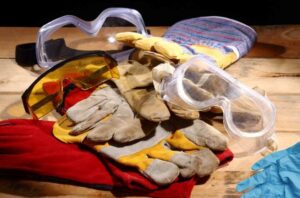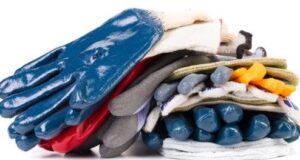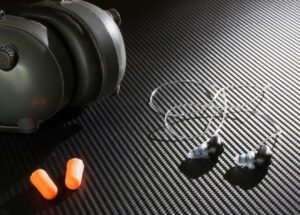
SDS sheets outline PPE needed
- The types of Personal Protective Equipment (PPE) required for the compactor room are guided by basic hazard identifiecation and the SDS sheets of products you use. While SDS’s vary greatly, they are really important to i) evaluate the risks from products ii) mitigate the risks.
At Air Fixx in our development process, we first check to see how dangerous a product is and what the danger is. Products need to do their job, but if the sheets show a DANGER from a single exposure with a low number rating, we try adjust the ingredients to create a less dangerous product. Thus, comparing SDS’s of similar products can be helpful for product choice.
For a good understanding of the sections of SDS’s there are good resources: here and also here. Obviously, all sections need consideration, but for basic use the most relevant are generally:
Section 2: Hazard identification
Section 4: First aid measures
Section 7: Handling and storage
Section 8: Exposure controls/personal protection
In Section 2
- there are two hazard categories: Danger and Warning. Danger is for more severe threats, and warnings are for less sever ones. Not all materials require one of these signal words.
- each of these threats are numbered are numbered for severity:
– a lower number means a higher level of hazard;
– similarly, a higher number means a decreasing, but still present, issue.
You’ve heard the term, “location, location, location”
it’s usually used for real estate but applies for PPE too.
Logically, one of the best ways to encourage PPE use in a compactor room is to have spares highly visible near the entrance. This serves as a quick reminder to put it on. Standard PPE for compactor rooms includes gloves, hearing protection, goggles and masks. Good shoes are also essential, but you aren’t really going to have extra’s of those in inventory.
Make wearing safety equipment a habit
If you think about different construction sites, it’s easy to see that some insist on safety protection, while others….not so much. Once grabbing PPE becomes automatic and part of the culture useage rates really improve as so can morale. After all, if my boss really cares about my long term hearing, I feel more cared for. Having a policy is great, but other ideas like getting employees to give friendly reminders or fun incentives may be effective.
Gloves

Glove selection is based on personal preference. They:
- safeguard against chemical hazards
- shield against cuts from picking up sharp objects
- limit germs on bare hands
- protect from cold in the winter
Hearing Protection: perhaps the least worn PPE
Glass makes a lot of noise on its way down a chute (particularly in a tall building) and when it breaks. Garbage pick-up is very noisy too. There are three basic types of hearing protection:
- soft ones that are disposable and fit into ears
- an over the ear type – convenient for taking on and off as needed
- made to measure silicone ear protection (similar to hearing aids) are the most comfortable to wear, but can be expensive.
In general, a good way to decide is to let the super chose since ear protection only works when it is used.

Goggles / Eye Protection
These offer protection from chemicals and from objects that can break on impact. Many degreasers have warnings for avoiding contact with eyes. Specifically, for the best protection chemical splash goggles offer excellent protection when chemicals are being used.
Well fitting, slip resistant shoes
Properly fitting shoes with good grip will reduce the risk of trip and falls. This is important becasue floors can be slippery and they are hard (concrete). In addition, puncture proof soles will protect against broken glass. Finally, safety shoes will protect feet if the bins roll over them.
Masks
Self-explanitory at this point.
